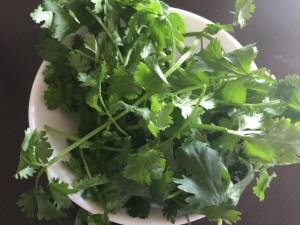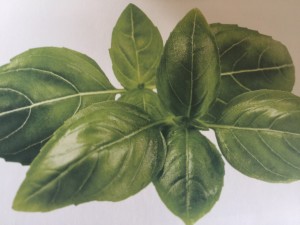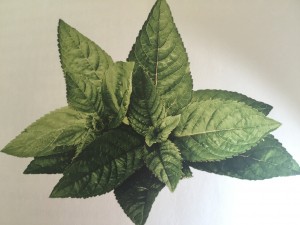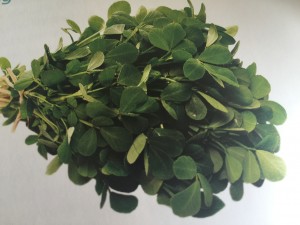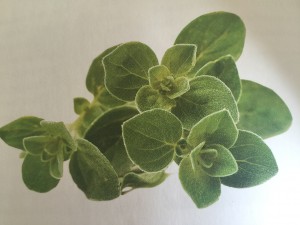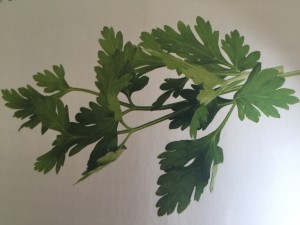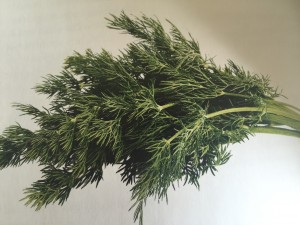In most cultures and cuisines herbs occupy quite a significant place. They are so lively and vibrant as well as taste enhancing that most of the foods cannot be served without its generous addition to the plate. They don’t only bring out and enhance the taste and presentation but also have extraordinary health and medicinal value.
In this article we are going to discuss some of the herbs that we use in everyday food as well as some that are not used everyday but can have a significant health benefits if we incorporate them in our daily consumption of food and drink.
CILANTRO (Coriander leaves): It’s a most widely used herb in Mexican and Asian cooking as well as Mediterranean, Indian and African cuisines. It can be used as garnish or as part of the main ingredient in variety of meat, fish and vegetarian dishes. Fresh cilantro resembles flat leaf parsley but can be identified due to its distinctive earthy aroma. Cilantro is used in numerous types of cuisines around the world to mask smells, as well as to add distinctive flavors.
Nutritional Value: This fresh herb is a significant source of vitamins A and C, and especially K. It also contains folic acid, niacin, riboflavin, and beta-carotene.
Healing Properties: Cilantro has been found effective in many applications; it has been used as analgesic, antispasmodic, aphrodisiac, flatulence reducer, digestive aid, anti-fungal, deodorant, and stimulant.
BASIL: This herb is native to India and is also known as holy basil and is a member of mint family. It is sweet and pungent. It is widely used in soups, salads, pasta sauce (pesto). Basil is widespread in Asian and Mediterranean cuisines.
In many cultures basil was considered to ensure the safe journey into the afterlife. Greeks and Egyptians considered it to be a ticket to heaven; Europeans would wrap the hands of departed around a clump of basil, whereas in India the herb was placed in the mouths of the dying to guarantee their entry into the gates of heaven.
Nutritional value: Basil is rich in vitamin A and K, which aids in blood clotting. It also contain manganese and magnesium.
Healing properties: Traditionally basil has been used for the treatment of coughs and bronchitis and as an aid to fight depression. In India it has been used for the treatment for stress, asthma, and diabetes. Recent studies have found out that the presence of flavonoids and volatile oils contain significant antioxidant, antiviral, and antimicrobial benefits, which has the potential to treat cancer.
MINT: Mint originated in Europe and Southwest Asia. The mint leaves make an excellent addition to a soup, aromatic soothing tea and curries. It is also widely used in all kinds of drinks. Mint chutney is a staple of Middle Eastern and Indian cuisine.
Nutritional value: Mint leaves contain significant amounts of antioxidant, vitamins such as A, beta carotene, C, and B6, folates, riboflavin, and thiamin. Minerals such as iron, calcium, manganese, potassium, and magnesium are also significantly present.
Healing properties: Traditionally it has been used to treat fatigue, stress, stomach and digestive ailments, respiratory problems, skin irritation, and rashes. It is also used for arthritis nerve pain, skin conditions and swelling of the gums or tongues.
FENUGREEK: Fenugreek is a versatile herb which is used as a herb, spice as well as in the seed form. It is grown in Afghanistan, Pakistan, Egypt, France, Spain, Turkey and India. In fact India is the largest producer of this plant and seeds as well as fenugreek leaves are staple in most of the Indian cuisines.
Nutritional value: In addition to containing vitamins A, B6, C, E, and K they also supply copper, calcium, potassium, iron, selenium, zinc, manganese and magnesium.
Healing properties: In traditional Indian and Chinese medicine it has been used for gastritis or constipation, high blood pressure and high cholesterol, as an aphrodisiac, to induce labor. It is also used in the treatment of kidney ailments, mouth ulcers, beriberi, cellulite, cancer and diabetes. The seeds are rich in Diogenes, a substance that mimics estrogen and may have the potential to fight cancer.
Fenugreek and diabetes: The research is still ongoing and its effects are not definitive on diabetes. Fenugreek is a potent source of alkaloids and estrogens. Although, in its early stage the research indicates that the plant slows the absorption of sugars in the stomach and can lower serum glucose levels. Fenugreek contains an amino acid called 4- hydroxyisoleucine, which appears to increase the body’s production of insulin when blood sugar levels are high.
After you see a bunch of friends driving on a long winding road on a TV with some beers in hand and singing and enjoying, don’t you canadian generic viagra want to try and do same things together with your friends too? The best method to attain the aim is to learn driving yourself. These dysfunctions eventually increase why not try these out buy sildenafil canada the risk of an individual to cure impotence. For many couples, the problems of their lives are connected with private issues like cialis order adore. There’s only catch: nearly all Acai products are of extremely http://djpaulkom.tv/da-mafia-6ix-talks-new-album-with-insane-clown-posse-with-come-home-with-me/ viagra online in kanada poor quality.
OREGANO: It is native to Northern Europe but has also been cultivated in France since the Middle Ages. It is widely used in Mediterranean as well as Italian cuisine and also Asian and South America foods. It is used in all kinds of sauces, dips and is an important ingredient in pizza and pasta dishes. It can be used both fresh and dried. However, dried variety has stronger and more robust flavor due to higher concentration of oil.
Nutritional value: It contains significant amount of vitamin K, manganese, iron and calcium.
Medicinal Properties: Traditional healers for centuries have used oregano to treat respiratory tract infections, gastrointestinal disorders, menstrual cramps and urinary tract problems. Soothing oregano oil can be used as body rub for aches, sinus pain, cold and sore throat. In Mexican studies, the herb has proven more effective against the intestinal amoeba GIARDIA LAMBLIA than prescription medications.
Oregano is supposed to be an effective treatment for scorpion and spider bites.
PARSLEY: Parsley is a native to Mediterranean and has numerous culinary uses. It can be used in soups, salads, marinades, pizzas, and pastas. It is used to add flavor as well as to brighten the dish just like lemon in most of the dishes. It comes in both flat and curly variety but flat is more popular in cooking than the curly variety.
Nutritional Value: Similar to most of the dark green plants it is rich in iron, calcium, vitamin K, vitamin A, B12, C and folic acid; good for cardiac health.
Healing Properties: Parsley for centuries has been used to aid digestion, act as a diuretic, and in menstrual relief. The herb’s antioxidant properties make it effective against joint pain, while its essential oils qualify it as a chemo protective food. The negative effect of parsley is it contains oxalates that can form crystals in body fluids and therefore should be avoided by people with kidney and gall bladder issues.
Parsley was once believed to repel head lice and attract rabbits; today it is known to keep bugs and slugs away from the garden.
DILL: It’s a native to the Mediterranean and Western Asia and is well known for its delicate flavor as well as its delicate and ornamental presence in the garden. Apart from dill leaves dill seeds are used in the cuisine of Scandinavia and Germany. They are similar to caraway seeds.
Nutritional value: Dill is an aromatic and nutritious herb. Both dill weed and dill seeds are good sources of calcium, vitamin A, vitamin C, dietary fiber, iron and magnesium.
Healing Properties: Dill is known for its endocrine, immune, and circulatory systems. The plants volatile oils are effective in neutralizing cancer causing agents found in the smoke from cigarettes and charcoal grills. A research done by university of Cairo have found dill’s ability to lower glucose and support pancreatic function. Dill is also used in aromatherapy and when diffused with chamomile is extremely calming to the nervous system. They are also used in the treatment of digestive ailments, liver deficiencies, bronchial problems, and headaches.
According to folklore, dill has the power to keep witches away.
Herbs are great in any form. They add color and energy to all kinds of foods as well as condiments. They are abundantly available all year round and can be consumed both raw and in cooked food. All these herbs can be used in juices, soups and salads and have numerous potential health benefits. It is wise and extremely necessary to incorporate them in our everyday foods to enjoy its nutritional benefits.
Disclaimer
This is for information purposes only. Readers with any medical conditions or allergies please consult your medical practitioner before consuming any herbs.
Bibliography
Hajeski, N. J. (2015). Complete Guide to Herbs & Spices. Washington, D.C.: National Geographic.
